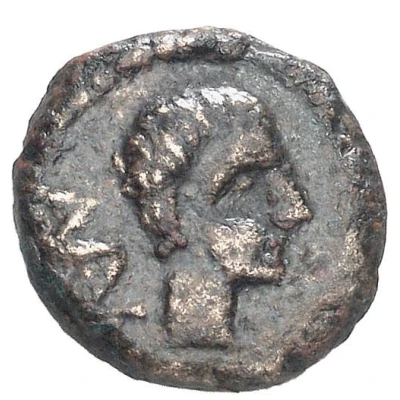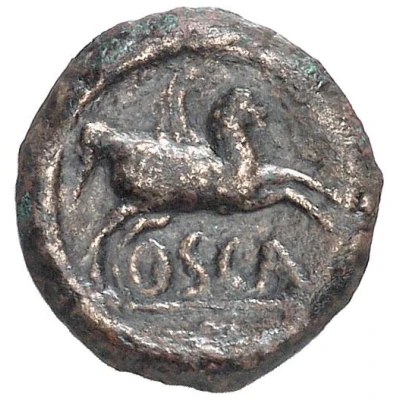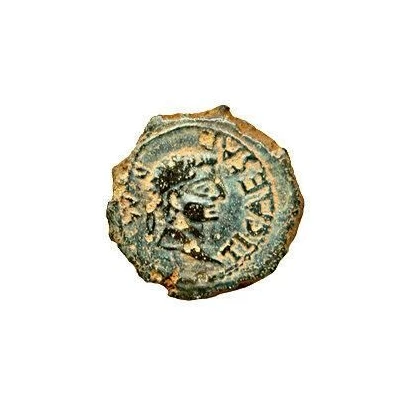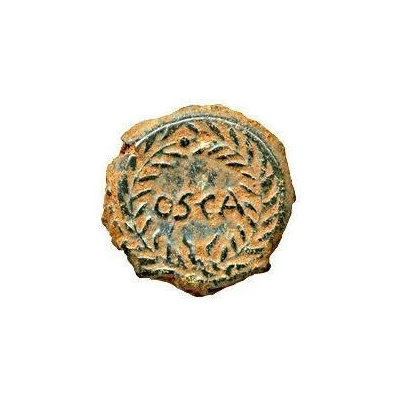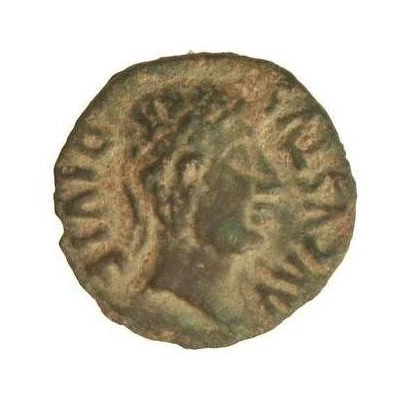
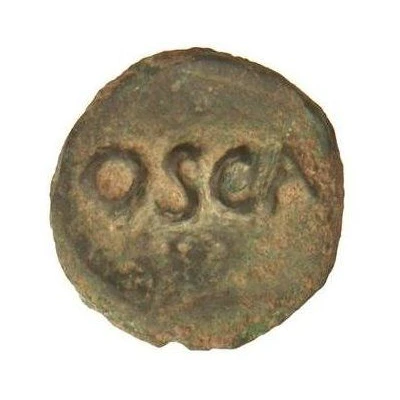

© Soler y Llach
Quadrans - Augustus OSCA 27 BC - 14 AD
| Bronze | 1.7 g | 15 mm |
| Issuer | Osca (Tarraconensis) |
|---|---|
| Emperor | Augustus (Caius Octavius) (27 BC - 14 AD) |
| Type | Standard circulation coin |
| Years | 27 BC - 14 AD |
| Value | Quadrans (1⁄64) |
| Currency | Denarius (49 BC to AD 215) |
| Composition | Bronze |
| Weight | 1.7 g |
| Diameter | 15 mm |
| Shape | Round (irregular) |
| Technique | Hammered |
| Orientation | Variable alignment ↺ |
| Demonetized | Yes |
| Updated | 2024-10-06 |
| Numista | N#414816 |
|---|---|
| Rarity index | 100% |
Reverse
Script: Latin
Lettering: OSCA
Interesting fact
The Quadrans - Augustus (OSCA) coin was used to pay the soldiers of the Roman Empire. It was a bronze coin that was introduced by Emperor Augustus in 27 BC and was used until 14 AD. The coin weighed 1.7 grams and had a diameter of 17 millimeters. It featured the image of Augustus on one side and the goddess Salus on the other. The coin was minted in the city of Osca (now known as Huesca) in the Tarraconensis region of Spain. Interestingly, the Quadrans - Augustus (OSCA) coin was used as a form of payment for soldiers, but it was also used as a way to spread propaganda and promote the image of Augustus as a powerful and benevolent leader. The coin's design and inscriptions were carefully chosen to convey the message of Roman power and prosperity, and it was distributed widely throughout the empire to promote unity and loyalty among the people. Overall, the Quadrans - Augustus (OSCA) coin is an interesting example of how currency can be used not only as a medium of exchange but also as a tool for political propaganda and social control.
